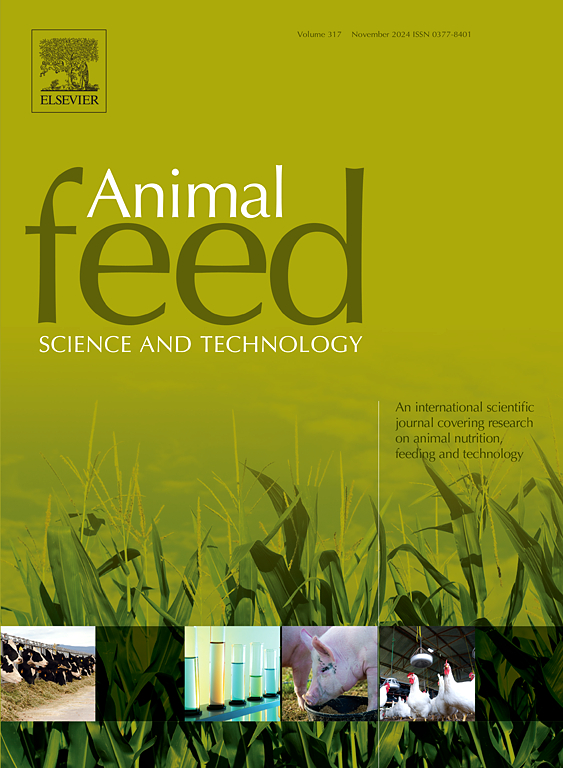Assessment of macroalgae and macroalgal extracts as a source of minerals in need of fine-tuning in multiple livestock production systems
IF 2.5
2区 农林科学
Q1 AGRICULTURE, DAIRY & ANIMAL SCIENCE
引用次数: 0
Abstract
This study evaluates the levels of macrominerals (Ca, Mg, P, K, Na, S), essential trace elements (Co, Cr, Cu, Fe, I, Mn, Mo, Ni, Se, Zn) and potentially toxic trace elements (Cd, Hg, Pb, As (inorganic and organic)) in seven species of macroalgae and in their extracts. The potential maximum levels of inclusion of macroalgal biomass and extracts in feed were assessed in multiple livestock (swine, ruminant, poultry, leporine and pisciculture). Overall, macroalgae contained high levels of I, reaching its highest levels in S. latissima (4131 mg/kg DM) and L. ochroleuca (2780 mg/kg DM). Arsenic concentrations ranged from 4.10 mg/kg DM in Ulva spp. to 68.9 mg/kg DM in S. latissima. Arsenic was mainly present as arsenosugars, of relatively low toxicity. Extracts had higher macrominerals and I levels, and lower essential and toxic trace elements levels compared to the biomass. Macroalgal biomass and extracts can be added to feed at 1–5 % to fulfill the physiological needs of multiple livestock, being I contents the main factor limiting highest inclusion rates. Inclusion of S. latissima and L. ochroleuca should be limited to 0.72 and 0.66 %, respectively. Maximum level of inclusion of different macroalgal products, as dried biomass or extracts, must be finely tuned. Low levels of inclusion of macroalgae and/or extracts in feed can be considered as an efficient and natural strategy to fulfill the macrominerals and iodine needs of multiple livestock.
求助全文
约1分钟内获得全文
求助全文
来源期刊

Animal Feed Science and Technology
农林科学-奶制品与动物科学
CiteScore
6.00
自引率
6.20%
发文量
266
审稿时长
3 months
期刊介绍:
Animal Feed Science and Technology is a unique journal publishing scientific papers of international interest focusing on animal feeds and their feeding.
Papers describing research on feed for ruminants and non-ruminants, including poultry, horses, companion animals and aquatic animals, are welcome.
The journal covers the following areas:
Nutritive value of feeds (e.g., assessment, improvement)
Methods of conserving and processing feeds that affect their nutritional value
Agronomic and climatic factors influencing the nutritive value of feeds
Utilization of feeds and the improvement of such
Metabolic, production, reproduction and health responses, as well as potential environmental impacts, of diet inputs and feed technologies (e.g., feeds, feed additives, feed components, mycotoxins)
Mathematical models relating directly to animal-feed interactions
Analytical and experimental methods for feed evaluation
Environmental impacts of feed technologies in animal production.
 求助内容:
求助内容: 应助结果提醒方式:
应助结果提醒方式:


